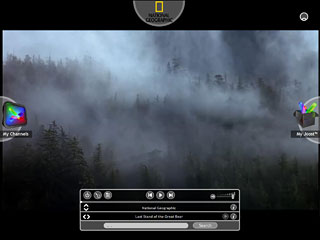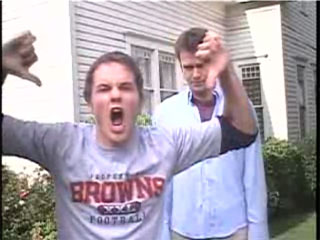Wired Magazine ran a blog post on May 21, 2007 about failed TV shows going big, thanks to their online potential. It’s no mystery anymore that TV programs new, old or still in development show up online — often in the same night, legally or otherwise — and people tune in. When you’re not “on the (studio) lot,” it’s no loss going online; the producers can at least get someone to watch and maybe recognize their sleeper success. And maybe if they plan it right, with the faux MySpace profiles, convenient “e-mail to a friend” sidebars, catchy official sites with community-building plug-ins and the cold calls to YouTube to “feature me,” the show might have a chance.
Where the money’s going
In New York City this last week, there was the networks’ annual “don’t-you-know-how-amazing-this-is” event for media agencies and advertisers called the “Upfronts,â€? where the TV network’s line-ups are announced and ad buys are made in a frenzy. The big change this time around — thanks to the advent of Tivo, YouTube, DVR’s and the increasing coolness of not watching TV anymore — they’re no longer buying just a primetime slot. AdWeek notes (link no longer online) that it’s now about “live-plus-same-day” or “live-plus-three-day,” since people aren’t glued to the tele at the original airtime.
Reinventing the remote control

Of course, one start-up that pleases both producers and advertisers — excluding the “user generated” echelon — is Joost. This soon-to-launch online video distribution platform is a big deal and its gearing up to take on your primetime viewing rituals. Think of it as how iTunes handles television shows: democratizing the solo episode, but for free. In the last two months, since their first commercial aired during the Super Bowl, Joost made deals where YouTube and News Corp. could not: they wrangled Viacom, CBS, Warner Music Group, CNN, Sony and others like Creative Artists Agency, Sports Illustrated, NHL and Hasbro. (Check Techcrunch’s regular coverage.) And in terms of advertising, the model for Joost is — for now — quality over quantity. (Read Wired Magazine’s interview [2/2007]; Kazaa and Skype are part of the track-record for Joost’s founders.) Since they’ll be able to target your show, zip code and recency of viewing, you’ll see a five- to ten-second ad pop-up over the show.
Ad-supported free TV is quite a turn on
Here are some example trends of existing ad-supported free TV:
- “30 Rock”
Recent entire episodes on NBC.com’s own video player (Flash)
Separated into 4 parts with single-sponsor ad 4 times per half-hour per show - “Shark”
Recent entire episode on CBS.com’s own “Innertube� video player (Flash with RealPlayer)
Separated into 5 parts with single ads 5 times per half-hour per show - “Lost”
Recent entire episodes on ABC.com’s own video player (Flash with third-party plug-in)
Not separated into parts with single-sponsor ad 2 times per half-hour per show

But for video producers without network distribution deals, making a big impression is key. You need millions of viewers, not dollars, to be taken seriously. The famous user-generated video distributor, YouTube, recently paid reward to their most subscribed original hits. (Many competitors — see our collective resource of social video sharing networks — already share ad revenue with their most popular distributions.)
Up-and-coming quality television
Example shows off the tube and on the internet, already in (or should be in) the news:
- “Gay Robot” (pilot only)
Why watch? Adam Sandler team’s involved. - “Nobody’s Watching” (pilot only)
Why watch? The CW’s ol’ WB network passed it up. - “Lonelygirl15” (on-going series)
Why watch? 10 million viewers and 93,000 subscribers, even after it was exposed as fake early-on. - “smosh” (on-going series)
Why watch? YouTube’s all-time #1 broadcaster, for now, with 74 million plays. - “DERRICKcomedy” (on-going series)
Why watch? Self-described improv between “silly and awful.” - “Fireside Chats” (on-going series)
Why watch? Regular screenings at UCLA are packed.



Commentary
Got something to add?